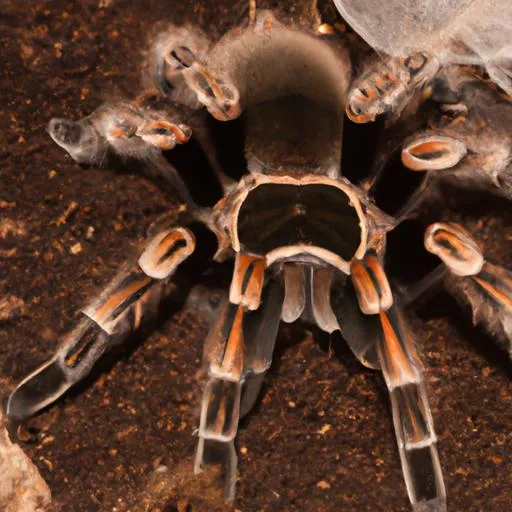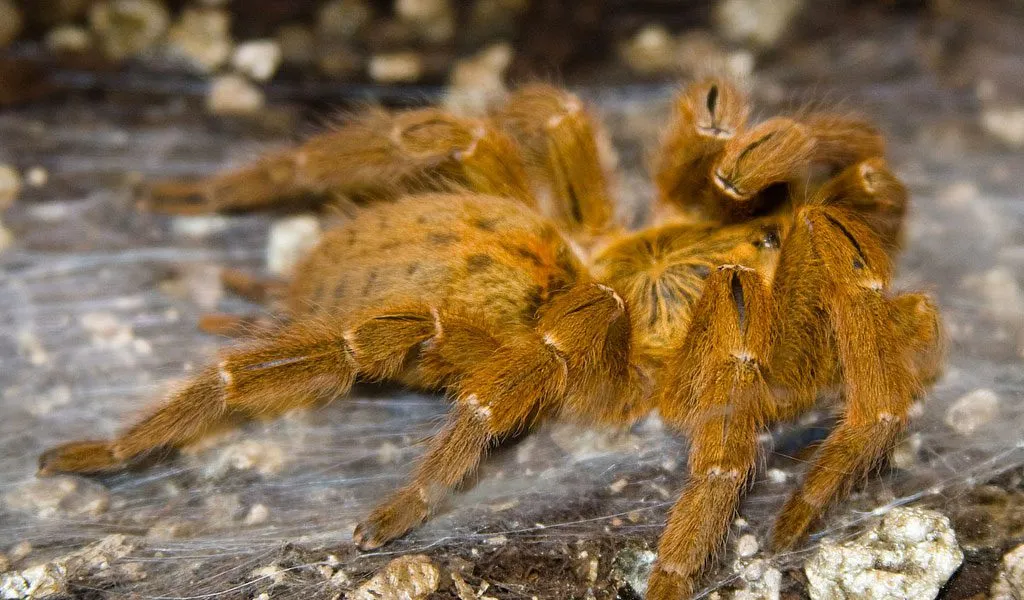Where Do Tarantulas Live?
Tarantulas, with their impressive size and diverse appearances, captivate the attention of many. Understanding where these fascinating creatures reside is essential to appreciating their ecological roles and the adaptations that allow them to thrive. Tarantulas are not limited to a single environment; they have successfully colonized a variety of habitats across the globe. From arid deserts to lush rainforests and even suburban areas, these spiders have demonstrated remarkable adaptability. This article delves into the primary habitats of tarantulas, exploring the specific conditions that support their survival and the unique characteristics that make each environment suitable for different species. Knowing where tarantulas live is a key part of understanding their behavior, diet, and overall place in the ecosystem.
Deserts
Deserts represent one of the primary habitats for many tarantula species. The arid conditions, characterized by low humidity and extreme temperature variations, present unique challenges for survival. Despite these harsh conditions, tarantulas have evolved specific adaptations to thrive. These spiders often construct burrows deep within the sand or soil to escape the scorching heat during the day. These burrows also provide a stable microclimate, maintaining consistent temperature and humidity levels, which are crucial for the tarantula’s survival. Desert tarantulas are typically nocturnal hunters, emerging at night to hunt prey, such as insects and other arthropods. The sandy terrain also allows them to ambush their prey effectively. This lifestyle minimizes their exposure to the sun and conserves water, essential for surviving in the desert.
Characteristics of Desert Habitats

Desert habitats are defined by their low precipitation levels, often receiving less than 10 inches of rainfall annually. The soil tends to be sandy or rocky, offering poor water retention capabilities. Daily temperature swings can be dramatic, with scorching daytime temperatures and significant drops at night. Desert ecosystems support specialized plant life, such as cacti and succulents, which are adapted to conserve water. These plants, along with various animal species, create a complex food web where tarantulas play a role. The scarcity of water and food resources influences the behavior and lifestyle of desert-dwelling tarantulas. Their survival depends heavily on their ability to conserve water, hunt efficiently, and avoid predators in a harsh environment. Understanding these characteristics helps in appreciating the resilience of tarantulas in these challenging ecosystems.
Tarantula Adaptations in Deserts
To survive in the desert, tarantulas have developed several remarkable adaptations. Their burrows act as a crucial refuge, providing a cooler and more humid environment compared to the outside surroundings. These burrows can extend several feet underground. Many desert tarantulas have specialized hairs on their bodies that help to trap water and prevent dehydration. They also have a highly efficient metabolism that conserves water. Their hunting behavior is adapted to the nocturnal environment, which minimizes their exposure to the sun. The color of desert tarantulas often matches the desert soil, providing camouflage and helping them to ambush prey. These adaptations are a testament to the tarantula’s ability to thrive in the face of extreme environmental conditions. The resilience of tarantulas in deserts underscores their remarkable evolutionary journey.
Grasslands
Grasslands also provide suitable habitats for various tarantula species. These open ecosystems, characterized by vast stretches of grasses and sporadic trees, offer different challenges and opportunities than deserts. Grassland tarantulas often construct burrows in the soil, similar to desert species, but the conditions may differ due to higher humidity and more frequent rainfall. The presence of abundant insect life makes grasslands a rich hunting ground for these spiders. The open nature of grasslands also influences their behavior, as they need to be vigilant against predators. Tarantulas here have adapted to the seasonal changes of grasslands, which include periods of drought, fires, and the growth cycles of grasses. Their presence highlights the adaptability of tarantulas to a wide range of environments.
Features of Grassland Environments

Grasslands are typically characterized by moderate rainfall, fertile soil, and a dominance of grasses and other herbaceous plants. The climate in grasslands varies depending on the location. Temperature fluctuations exist, but they are usually not as extreme as in deserts. Grasslands support a diverse range of wildlife, including grazing animals, insects, and other arthropods. The vegetation in grasslands is often adapted to withstand grazing and fire. These ecosystems play a crucial role in carbon sequestration and support biodiversity. The open landscape provides tarantulas with ample hunting grounds, while the soil offers opportunities for burrowing. These features create a dynamic environment for tarantulas, influencing their hunting habits and overall lifestyle.
Tarantula Behavior in Grasslands
Tarantulas in grasslands exhibit a range of behaviors adapted to their environment. They are typically ambush predators, waiting for prey to come close to their burrows. Their burrows provide shelter from both predators and the elements. The spiders may actively hunt during the day or night, depending on the species and the season. They use their fangs to inject venom that immobilizes prey, which they then consume. The open nature of grasslands requires tarantulas to be vigilant to avoid predators, such as birds and mammals. They also must adapt to seasonal changes, including periods of drought and fire, which can impact food availability and shelter. The diverse insect population provides a rich source of food, supporting tarantula growth and reproduction. Their behavior reflects their adaptability and the challenges they face in the grassland environment.
Rainforests
Rainforests offer a lush and humid habitat for many tarantula species. The dense vegetation, high humidity, and consistent temperatures create a unique environment. Rainforest tarantulas often live in burrows within the leaf litter, under logs, or in the soil. Some species are arboreal, meaning they live in trees. The abundance of insects and other arthropods makes rainforests a rich food source for tarantulas. The complex structure of rainforests provides diverse niches for these spiders, leading to a wide variety of tarantula species. Their lifestyle includes a mix of terrestrial, arboreal, and burrowing behaviors, showcasing their adaptability. Their presence contributes to the health of the rainforest ecosystem. Different species have specific adaptations to thrive in their respective rainforest niches.
Rainforest Characteristics and Tarantulas

Rainforests are characterized by high rainfall, high humidity, and consistent warm temperatures throughout the year. The dense vegetation creates a complex structure with multiple layers, from the forest floor to the canopy. The soil is rich in organic matter, which supports a diverse ecosystem. The rainforest environment supports a remarkable variety of plant and animal life, with a high degree of biodiversity. These ecosystems play a crucial role in regulating the global climate and providing habitat for countless species. The constant moisture and moderate temperatures provide a stable environment for tarantulas. The abundance of food and the varied habitats create a thriving environment for these spiders.
Specialized Rainforest Tarantula Species
Many specialized tarantula species have evolved to thrive in rainforest environments. Some species are arboreal, living in trees and utilizing silk to construct nests. Others are terrestrial, burrowing in the forest floor or beneath logs. These spiders have adapted to the specific conditions of their niches, with unique coloration, behaviors, and feeding habits. Some species have specialized hairs for defense. The rainforest provides a rich diversity of prey, enabling tarantulas to thrive. These specialized adaptations showcase the evolutionary diversity and resilience of tarantulas in their rainforest habitats. Their survival reflects the complex interplay between the spiders and their environment.
Woodlands
Woodlands, with their mixture of trees, shrubs, and leaf litter, offer another habitat for tarantulas. These environments provide a balance of shade and sun, supporting a variety of insect life, which serves as prey for tarantulas. Woodland tarantulas often construct burrows in the soil or beneath logs and rocks, providing shelter from predators and the elements. The leaf litter provides a habitat for numerous invertebrates, forming a crucial part of the tarantula’s diet. The woodlands’ seasonal changes influence tarantula behavior. Tarantulas become more active during warmer months and retreat deeper into their burrows during colder periods. The woodlands’ diverse conditions provide a suitable environment for these arachnids to thrive.
Woodland Habitats and Tarantula Presence

Woodland habitats are characterized by a mixture of trees, shrubs, and herbaceous plants. The amount of sunlight varies depending on the density of the canopy. Soil moisture levels are usually moderate, supporting the growth of diverse vegetation. Woodlands provide a range of microhabitats, including leaf litter, fallen logs, and rocks. The forest floor supports a variety of insects and invertebrates, which are food sources for tarantulas. These ecosystems often experience seasonal changes, which influence the activity of tarantulas. The woodland environment provides a variety of opportunities for tarantulas, including shelter, food, and protection from predators.
Adaptations for Woodland Life
Tarantulas living in woodlands exhibit specific adaptations to thrive in their environment. They often have strong digging abilities to create and maintain burrows in the soil. They are typically ambush predators, waiting in their burrows for prey to pass. Woodland tarantulas’ coloration frequently blends with the forest floor. They may adjust their activity levels depending on the season, retreating deeper into burrows during colder periods. Their behavior showcases their ability to utilize the resources available in the woodland environment. These adaptations allow tarantulas to efficiently hunt, conserve energy, and avoid predators in this varied habitat.
Other Habitats
Beyond the primary habitats, tarantulas have been found in a variety of other locations. These can include areas that have been altered by human activity. The adaptability of tarantulas allows them to colonize unique environments where they can find shelter, food, and suitable conditions. This broad distribution highlights their resilience and ecological versatility. They have successfully adapted to various challenges, demonstrating their ability to survive in diverse conditions.
Suburban and Human-Modified Habitats

In some cases, tarantulas have been found in suburban areas and environments altered by human activity. These locations provide alternative habitats, especially when natural environments are compromised. Tarantulas may establish burrows in gardens, under rocks, or in other sheltered areas. They may rely on insects attracted by human activities for food. The presence of tarantulas in these areas indicates their ability to adapt to human-altered environments. This adaptation shows their resilience and their capacity to survive in close proximity to human settlements. These modified habitats present challenges and opportunities. This reflects the adaptability of tarantulas to various environments.
Factors Influencing Habitat Choice
Several factors influence the habitat choices of tarantulas. These factors include climate, availability of prey, the type of soil or terrain, and the presence of predators. Climate conditions such as temperature, humidity, and rainfall play a vital role. The availability of prey determines the food supply. The soil structure influences burrowing behavior, and the presence of predators shapes their hunting behavior. The interaction of these factors determines the species’ distribution and habitat preferences. The species-specific needs of different tarantula species also influence their habitat choices. Their selection of a suitable habitat showcases the intricate interplay of factors in their survival.
In conclusion, tarantulas live in a wide variety of habitats across the globe, with the primary ones being deserts, grasslands, rainforests, and woodlands. These spiders have developed unique adaptations that allow them to survive and thrive in diverse environments. Factors such as climate, prey availability, and soil type play crucial roles in influencing their habitat choice. Understanding the habitats of tarantulas provides insight into their behavior, ecological roles, and resilience. Their ability to adapt showcases their evolutionary success. Their presence in different environments highlights their ability to thrive and contribute to the biodiversity of their ecosystems.
